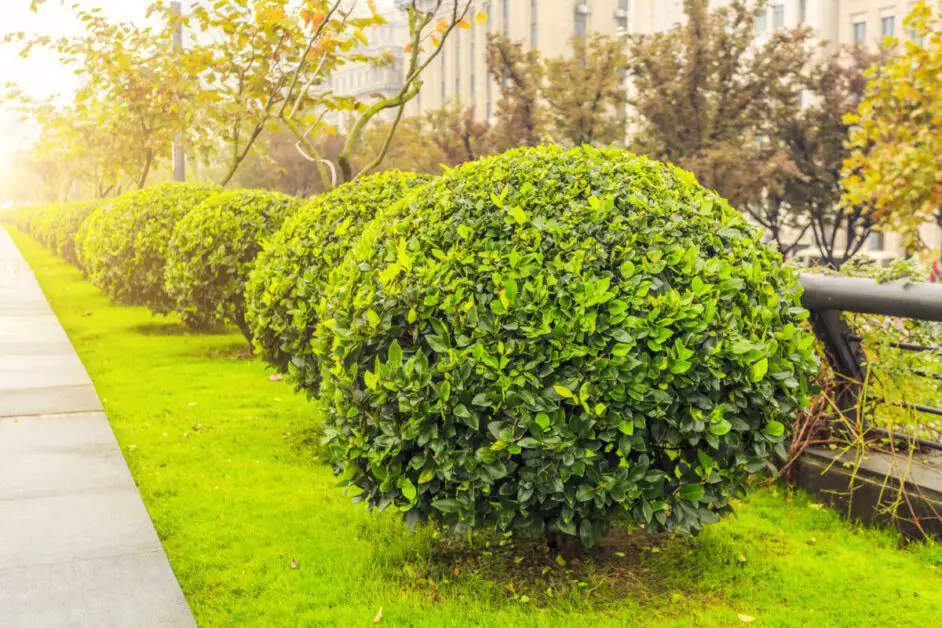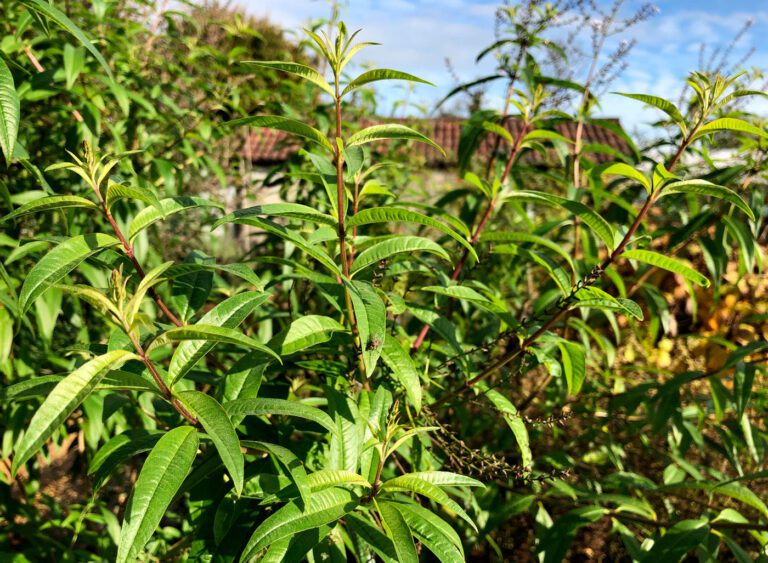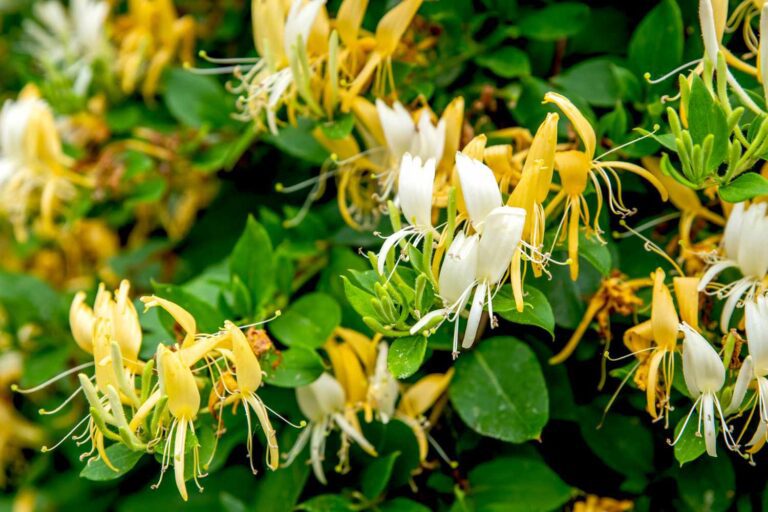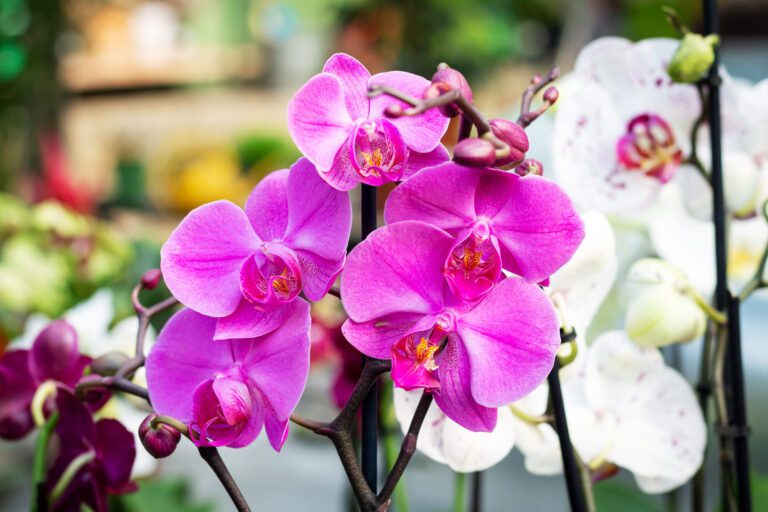How Many Plants Can I Grow: A Guide to Determining the Optimal Plant Density and Spacing for Your Garden
Table of Contents
Understanding the Importance of Plant Density and Spacing
Plant density and spacing are critical factors to consider when planning your garden. The importance of these elements cannot be overstated, as they directly impact the health and productivity of your plants. Proper plant density ensures that each plant has enough space to grow and access essential resources such as sunlight, air, water, and nutrients. It also helps in preventing competition among plants, reducing the risk of diseases, and facilitating efficient pest control. On the other hand, the optimal spacing between plants allows for maximum utilization of the available area, ensuring higher yields and better overall plant growth.

Achieving the ideal plant density and spacing requires careful assessment and consideration of various factors. The size and layout of your garden play a crucial role in determining how many plants can be accommodated and how they should be distributed. Additionally, analyzing the soil quality and nutrient availability is essential, as it impacts the growth and development of plants. Evaluating the sunlight and shade conditions in your garden is equally important, as different plants have varying requirements for light intensity. By selecting the right plant varieties and determining the correct distance between them, you can optimize resources and maximize the potential of your garden.
Factors to Consider Before Determining Plant Density
Table
Before determining plant density for your garden, there are several important factors that you should consider. These factors will help you make informed decisions and optimize the growth and productivity of your plants.
Firstly, it is crucial to analyze the size and layout of your garden. The available space will directly impact the number of plants you can accommodate and the spacing between them. Consider the overall dimensions of your garden and any constraints that may limit plant growth, such as pathways, structures, or existing vegetation. This assessment will help you determine the maximum number of plants you can cultivate and ensure proper distribution within the given area.
| Factor | The volume occupied by the plant at the time of flowering decides the spacing of the crop. Plants of different sizes require different amounts of space between them. |
|---|---|
| Size of the plant | The crop should cover the soil as early as possible to intercept maximum sunlight. More interception of solar radiation leads to more dry matter production. Closely spaced plants intercept more radiation than widely spaced plants. Area of root spread also decides the density2. |
| Elasticity of the plant | The volume occupied by the plant at the time of flowering decides the spacing of the crop. Plants of different sizes require different amounts of space between them. |
| Foraging area or soil cover | Dry matter production is related to the amount of solar radiation intercepted by the canopy, which depends on the plant’s density. As the plant density increases, the canopy expands more rapidly, more radiation is intercepted and more dry matter is produced2. |
| Dry matter partitioning | The availability of nutrients in the soil affects the optimal plant density. High soil fertility can support higher plant density, while low soil fertility can limit plant growth and yield3. |
| Soil fertility | The availability of nutrients in the soil affects the optimal plant density. High soil fertility can support higher plant density, while low soil fertility can limit the plant growth and yield3. |
| Water availability | The amount of water available to the plants influences the optimal plant density. Adequate water supply can enhance plant growth and yield, while water stress can reduce plant growth and yield3. |
| Climate and weather conditions | The temperature, humidity, rainfall, and wind can affect the optimal plant density. High temperature and low humidity can increase the evapotranspiration and water demand of the plants, while low temperature and high humidity can reduce the photosynthesis and growth of the plants. Rainfall and wind can also affect the soil moisture and plant stability3. |
Additionally, assessing the soil quality and nutrient availability is essential for plant health and development. Different plants have varying nutrient requirements, and understanding the soil’s nutrient content will enable you to make informed decisions about plant density. Conduct a soil test to determine the pH level, nutrient composition, and any deficiencies that may need to be addressed. By matching plant density to soil conditions, you can ensure that your plants have the necessary nutrients to thrive.
Moreover, evaluating the sunlight and shade conditions in your garden is crucial for determining plant density. Sunlight is a primary source of plant energy and plays a vital role in their growth and photosynthesis. Observe the sun’s patterns throughout the day and assess any areas of shade or direct sunlight in your garden. By understanding the light availability, you can strategically place and space your plants to optimize their exposure to sunlight.
By considering these factors before determining plant density, you will be equipped with the necessary information to create an optimal and thriving garden. Ensuring proper space usage, addressing soil nutrient requirements, and maximizing sunlight exposure are vital steps in achieving healthy plant growth. Now that we have discussed the factors to consider, let’s delve into the next section on how to analyze the ideal plant varieties for your garden.
Analyzing the Size and Layout of Your Garden
Analyzing the size and layout of your garden is a crucial step in determining the appropriate plant density and spacing. The size of your garden will directly impact the number of plants you can accommodate and the overall arrangement. It is important to evaluate the available space and consider the specific requirements of the plants you intend to grow.
Start by measuring the dimensions of your garden, including both length and width. This will provide you with a clear understanding of the total area you have to work with. Additionally, consider the shape of your garden, as irregular or narrow layouts may require adjustments in plant density and spacing.
Next, take into account any existing structures or obstacles within your garden. These could include fences, sheds, trees, or other features that may impact the amount of available sunlight and shade. Understanding these factors will help you determine which areas of your garden are suitable for certain plants, allowing you to plan accordingly.
Once you have assessed the size and layout of your garden, you can move on to considering other important elements such as soil quality, nutrient availability, and sunlight conditions. By taking a holistic approach to analyzing your garden, you will set yourself up for success in achieving optimal plant density and spacing.
Assessing the Soil Quality and Nutrient Availability
Soil quality and nutrient availability are crucial factors to consider when determining the plant density and spacing in your garden. Assessing the condition of your soil will help you understand its fertility, texture, and nutrient content, allowing you to make informed decisions about the types and quantities of plants to grow.
To assess soil quality, start by examining its texture. Sandy soils drain quickly but may leach nutrients, while clay soils hold moisture but can become compacted. Loam soils provide an ideal balance of drainage and moisture retention. Conduct a simple soil texture test by grabbing a handful of soil and squeezing it. Sandy soil will fall apart easily, while clay soil will hold its shape and feel sticky. Loam soil will hold its shape but also crumble with slight pressure.
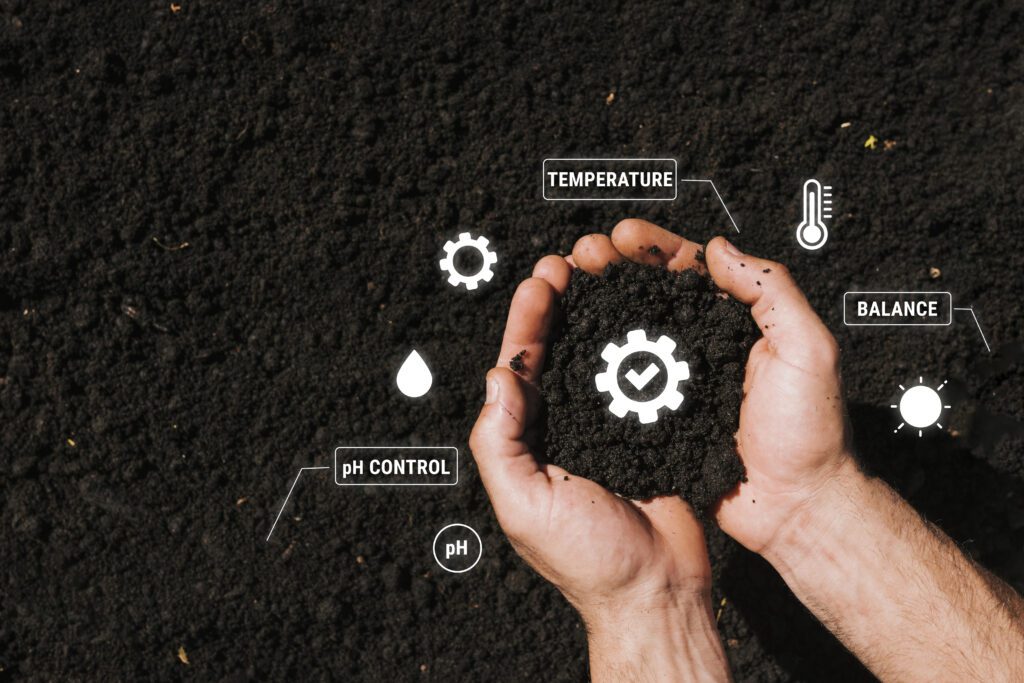
Next, consider the pH level of your soil. Most plants prefer a slightly acidic to neutral pH range, around 6.0 to 7.0. You can use a soil testing kit or send samples to a laboratory for a more precise analysis. Adjusting the pH level, if necessary, can improve nutrient availability to plants.
Once you have assessed the soil quality, it’s essential to evaluate its nutrient content. Nutrient availability is vital for plants to grow and thrive. Conducting a soil test can provide detailed information about nutrient deficiencies or excesses, enabling you to amend the soil accordingly. Common nutrients needed for plant growth include nitrogen, phosphorus, potassium, calcium, magnesium, and trace elements like iron, manganese, and zinc. Adding organic matter, such as compost or well-rotted manure, can replenish nutrients and improve soil structure.
By assessing the soil quality and nutrient availability, you can optimize plant growth and health, ensuring successful gardening endeavors.
Evaluating the Sunlight and Shade Conditions in Your Garden
When evaluating the sunlight and shade conditions in your garden, it is crucial to understand the specific requirements of your plant varieties. Different plants have varying levels of tolerance to sunlight and shade, and it is important to ensure that they receive the appropriate amount of light for optimal growth.
To determine the sunlight and shade conditions in your garden, begin by observing the area throughout the day. Take note of the duration and intensity of sunlight that each section of your garden receives. This can be done by monitoring the presence of direct sunlight, indirect sunlight, or shade at different times of the day.
Additionally, consider the impact of nearby structures, such as buildings or large trees, which can cast shadows and affect the distribution of light. Understanding these factors will help you make informed decisions about plant placement and ensure that each variety receives the ideal amount of sunlight or shade for its specific needs.
Remember, sunlight is essential for photosynthesis, the process by which plants convert light into chemical energy to fuel their growth. However, some plants, particularly those labeled as shade-loving or understory plants, thrive in areas with less direct sunlight. By carefully evaluating the sunlight and shade conditions in your garden, you can create an environment that promotes healthy plant growth and maximizes the potential of your garden space.
Selecting the Right Plant Varieties for Your Garden
Selecting the right plant varieties for your garden is a crucial step in ensuring successful and bountiful harvests. Different plant varieties have unique characteristics, growth habits, and requirements, and choosing the ones that align with your garden’s specific conditions and preferences can greatly enhance your gardening experience.
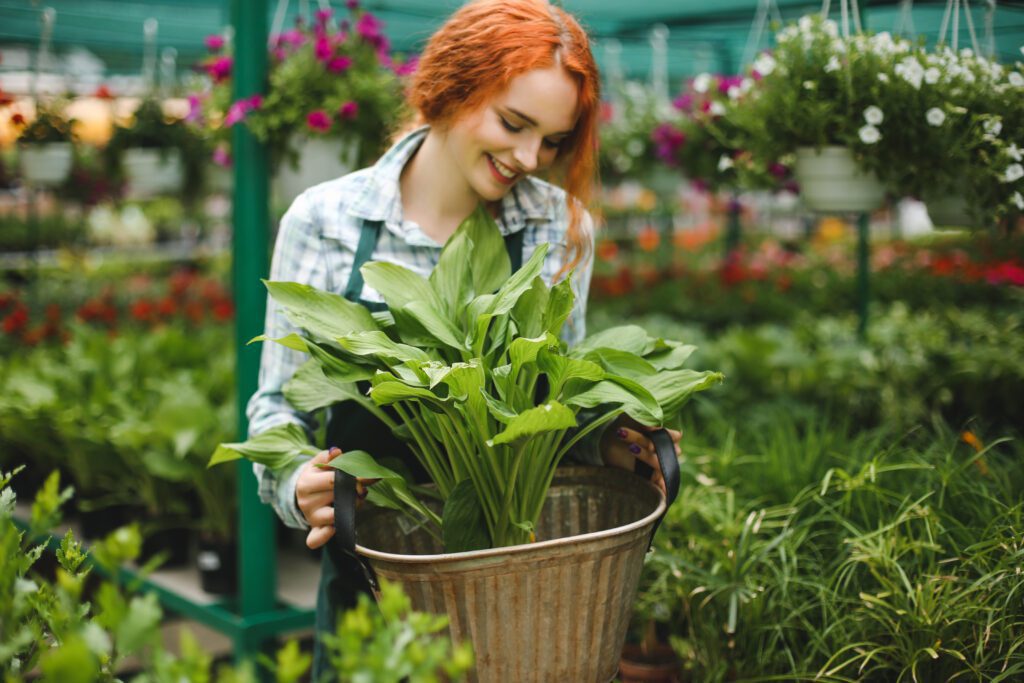
When considering plant varieties, it is essential to evaluate factors such as climate suitability, soil conditions, sunlight availability, and pest and disease resistance. Each region has its climate patterns, and selecting plant varieties that are well-adapted to your specific climate will increase the chances of a thriving garden. Similarly, examining your soil’s pH, nutrient levels, and drainage capacity will help you choose plants that can thrive in your garden’s specific soil conditions. Additionally, understanding the amount of sunlight your garden receives throughout the day will allow you to select plant varieties that can thrive in full sun, partial shade, or full shade. By considering these factors, you can select plant varieties that are best suited for your garden’s unique conditions and maximize your chances of a plentiful harvest.
Determining the Ideal Distance Between Plants
Determining the ideal distance between plants is crucial for achieving optimal growth, health, and productivity in your garden. Plant spacing plays a vital role in ensuring that each plant has enough space to receive adequate sunlight, nutrients, and air circulation. This not only promotes healthy growth but also helps prevent the spread of diseases and pests.
The specific distance between plants can vary depending on various factors such as the plant species, growth habits, and intended purpose. Generally, it is recommended to provide enough space between plants to accommodate their estimated final size. This allows each plant to develop a strong root system and access the necessary resources without competing with neighboring plants. Additionally, adequate spacing minimizes the risk of overcrowding, which can lead to reduced air circulation and increased moisture, providing favorable conditions for diseases to thrive.
To determine the ideal distance between plants, consider the recommended spacing guidelines provided by reputable gardening resources or consult with local experts. These guidelines often take into account both horizontal and vertical spacing, considering the plant’s width and height at maturity. Adhering to these recommendations ensures that your plants have ample room to grow, flourish, and reach their full potential. Remember, well-spaced plants not only enhance the overall aesthetics of your garden but also contribute to improved plant vigor and yields.
Calculating the Number of Plants Based on Recommended Spacing
Calculating the number of plants based on recommended spacing is essential for achieving optimal growth and maximizing yield in your garden. Once you have determined the spacing requirements for your specific plant varieties, you can easily estimate the number of plants that can be accommodated in a given area.
To begin the calculation process, you need to know the recommended spacing distance for each plant. This information can typically be found on seed packets, plant labels, or reputable gardening resources. For instance, let’s consider a common vegetable like tomatoes. The recommended spacing for determinate tomato plants is usually around 18-24 inches apart, while indeterminate varieties may require 24-36 inches of spacing.
Next, determine the total area available for planting. If you are working with a garden bed, measure the length and width to find the square footage. For irregular-shaped spaces, divide the area into smaller sections and sum up the individual measurements. It’s important to note that spacing recommendations can vary based on the plant’s growth habit and final size, so be sure to consider these factors when calculating.
Once you have these figures, divide the total area by the spacing requirements. This will give you an estimate of the maximum number of plants you can fit in the given space. For example, if you have a 6 ft by 4 ft garden bed and the recommended spacing for your chosen vegetable is 12 inches, your calculation would be (6 ft x 12 in) / (12 in) x (4 ft x 12 in) / (12 in) = 24 plants.
By accurately calculating the number of plants based on the recommended spacing, you can ensure that your garden is efficiently planned and that each plant has enough room to grow and thrive. Overcrowding can lead to competition for nutrients and sunlight, which can negatively impact the health and productivity of your plants. Conversely, excessive spacing can result in wasted space and decreased overall yield. Plan accordingly to strike the perfect balance and create an ideal growing environment for your plants.
• Calculating the number of plants based on recommended spacing is crucial for optimal growth and maximum yield in your garden.
• Knowing the recommended spacing distance for each plant is essential, which can be found on seed packets, plant labels, or reputable gardening resources.
• For example, determinate tomato plants usually require 18-24 inches apart, while indeterminate varieties may need 24-36 inches of spacing.
• Determine the total area available for planting by measuring the length and width of a garden bed or dividing irregular-shaped spaces into smaller sections.
• Consider factors like the plant’s growth habit and final size when calculating spacing requirements.
• Divide the total area by the spacing requirements to estimate the maximum number of plants that can fit in that space.
• For instance, a 6 ft by 4 ft garden bed with a recommended spacing of 12 inches would allow for approximately 24 plants.
• Accurate calculations ensure efficient planning and provide enough room for each plant to grow and thrive without competition for nutrients and sunlight.
• Avoid overcrowding or excessive spacing to strike a perfect balance and create an ideal growing environment.
Considering Plant Growth Potential and Final Size
When planning your garden, it is essential to consider the growth potential and final size of the plants you choose. Understanding how plants develop and the space they require to reach their full potential is crucial for a successful garden. Each plant has its growth habit and size, which can greatly affect the overall layout and productivity of your garden.
Some plants, such as fast-growing vine crops like cucumbers or melons, have a sprawling growth habit and can quickly take over a large area. On the other hand, plants like leafy greens or herbs may have a compact growth habit and require less space. It is important to research and consider the growth potential and final size of each plant you plan to grow to determine the appropriate spacing and layout in your garden.
By understanding the growth potential and final size of your plants, you can optimize your garden’s productivity and avoid overcrowding. Overcrowding can lead to competition for resources such as sunlight, nutrients, and water, resulting in stunted growth and poor yield. By giving each plant the space it needs, you can promote healthier growth and maximize your garden’s output. Additionally, proper spacing allows for proper air circulation, which can help prevent diseases that thrive in crowded and humid conditions.
Remember, each plant is unique, and its growth potential and final size can vary. So take the time to research and consider the specific requirements of each plant you plan to grow, tailoring your garden layout accordingly. Taking this extra step will help you create a thriving and productive garden that delights both the eye and the palate.
Understanding the Concept of Thinning and Its Benefits
Thinning is a crucial practice in gardening that involves removing some plants or plant parts from a densely populated area to improve overall plant health and maximize yield. The benefits of thinning are manifold and can greatly contribute to the success of your garden. By thinning, you provide ample space and resources for the remaining plants to grow and flourish. This helps prevent competition for sunlight, water, and nutrients, ensuring optimal conditions for each plant to thrive. Thinning also helps improve air circulation, reducing the risk of diseases and pests that tend to multiply in crowded environments.
Moreover, thinning allows you to maintain an aesthetic balance in your garden. Removing excess plants or branches helps create a more visually appealing and organized space. It also allows for better access when it comes to other gardening activities such as watering, fertilizing, and harvesting. Additionally, thinning can be a strategic method to regulate plant growth and control the size of your garden. By removing selected plants, you can prevent overcrowding and manage the final size of your plants, ensuring they do not outgrow your available space. Thinning also promotes adequate light penetration and reduces shade, allowing plants to photosynthesize efficiently and produce higher-quality fruits or flowers. By understanding and implementing the concept of thinning, you can effectively optimize the health, productivity, and aesthetics of your garden.
Managing Plant Density for Disease and Pest Control
Maintaining proper plant density is crucial for effective disease and pest control in your garden. When plants are too crowded, airflow is restricted, creating a favorable environment for the growth and spread of diseases. Additionally, pests find it easier to infest and multiply in densely packed plants, leading to widespread damage.
To manage plant density for disease and pest control, it is important to follow a few key practices. Firstly, ensure that you space your plants adequately, allowing for proper airflow and reducing the chances of disease development. Each plant species may have specific spacing requirements, so it is essential to refer to reliable gardening resources or seek advice from experienced gardeners or agronomists.
Another effective strategy is to implement crop rotation. By rotating your crops each season, you disrupt pest life cycles and reduce the risk of disease recurrence. Certain pests and diseases are known to have specific plant preferences, so rotating crops can help break the cycle and limit their populations.
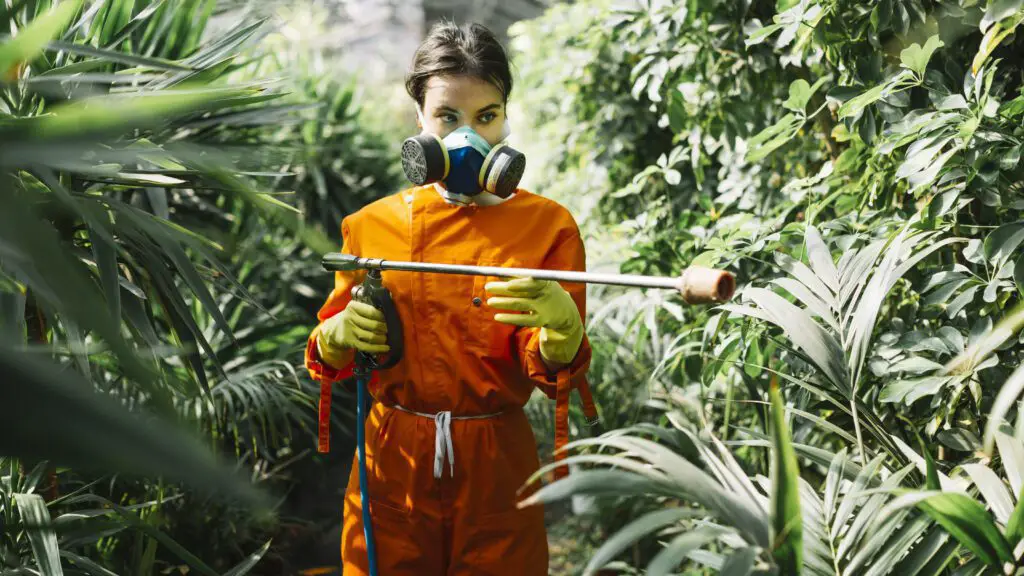
In addition to proper spacing and crop rotation, regular monitoring is critical. Keep a close eye on your plants for any signs of pest infestation or disease symptoms. Early detection allows for timely intervention, making it easier to prevent further damage or spread. Deploying organic pest control methods, like introducing beneficial insects or using natural repellents, can also help maintain a healthy plant density and protect your garden from potential threats.
Effective management of plant density is an essential aspect of maintaining a healthy and thriving garden. By providing adequate spacing, practicing crop rotation, and monitoring for diseases and pests, you can significantly reduce the risks and ensure the long-term success of your gardening endeavors.
Adapting Plant Density and Spacing for Different Crop Types
Adapting plant density and spacing is a crucial factor when it comes to different crop types. Each crop has specific requirements that must be considered to optimize growth and yield. For instance, leafy greens like lettuce and spinach tend to benefit from closer spacing, as it encourages the development of a dense canopy that helps shade out weeds. On the other hand, crops such as tomatoes and peppers generally require more space between plants to allow for proper air circulation and prevent the spread of diseases.
Another important aspect to consider is the potential size of the plant at maturity. Larger plants like corn or melons may require more space both in terms of distance between plants and row spacing. This allows them to have enough room to spread their branches or vines and fully develop. Smaller plants, such as radishes or carrots, can be planted more closely together to make efficient use of space.
Understanding the specific needs of different crops is vital to achieve optimal growth and yield. By adapting plant density and spacing accordingly, gardeners can create an environment that promotes healthy plant development while maximizing the use of available space. It ultimately ensures that each crop type can thrive and reach its full potential.
Monitoring and Adjusting Plant Density Over Time
While it is crucial to carefully plan and determine the initial plant density and spacing in your garden, it is equally important to monitor and adjust these factors over time. As your plants grow and develop, their needs may change, requiring you to make modifications to ensure optimal growth and productivity.
Regular monitoring of your garden allows you to assess the success of your initial plant density choices and make necessary adjustments. By observing the growth patterns, overall health, and development of your plants, you can identify any issues or imbalances that may arise. This can include overcrowding, nutrient deficiencies, competition for resources, or the spread of diseases and pests.
Adjusting plant density over time involves thinning out overcrowded areas or filling in gaps where plants have failed to thrive. By removing excess plants and redistributing them appropriately, you can ensure adequate space, light, and resources for each plant to flourish. This process not only enhances the aesthetic appeal of your garden but also promotes better air circulation, reduces the risk of disease, and improves overall plant health.
Remember that the adjustment of plant density is not a one-time task but an ongoing process throughout the entire growing season. By continuously monitoring and making necessary adjustments based on the specific needs of your plants, you can maintain an optimal plant density that supports healthy growth and maximizes yields. Building your knowledge and experience in monitoring and managing plant density will ultimately lead to a more successful and rewarding gardening experience.
Why are plant density and spacing important in gardening?
Plant density and spacing are important because they determine the amount of resources available to each plant, such as sunlight, nutrients, and water. Proper spacing ensures optimal growth and prevents overcrowding.
What factors should be considered before determining plant density?
Factors to consider include the size and layout of your garden, soil quality and nutrient availability, sunlight and shade conditions, plant varieties, and disease and pest control measures.
How can I analyze the size and layout of my garden to determine plant density?
Measure the dimensions of your garden and consider any permanent structures or obstacles. This will help you determine the available space for planting and how many plants can fit comfortably.
How can I assess the soil quality and nutrient availability in my garden?
Conduct a soil test to determine the pH level, nutrient content, and texture of the soil. This will help you understand if any amendments or fertilizers are needed to improve the soil quality for optimal plant growth.
What should I consider when evaluating sunlight and shade conditions in my garden?
Observe the amount and duration of sunlight in different areas of your garden throughout the day. Identify any areas that receive excessive shade or full sun, as this will affect plant growth and influence plant density decisions.
How do I select the right plant varieties for my garden?
Consider the specific growing requirements, such as sunlight, soil type, and climate, for different plant varieties. Choose plants that are suitable for your garden’s conditions and desired aesthetic.
How do I determine the ideal distance between plants?
Refer to the recommended spacing guidelines provided by seed packets or gardening resources. This information will vary depending on the type of plant and its growth habits.
How can I calculate the number of plants based on recommended spacing?
Measure the available planting area and divide it by the recommended spacing for each plant. This will give you an estimate of how many plants can be accommodated.
What is the concept of thinning and how does it benefit plant density?
Thinning involves removing excess plants to create the recommended spacing between the remaining plants. This allows for better air circulation, reduces competition for resources, and promotes healthier plant growth.
How can plant density be managed for disease and pest control?
Proper plant spacing can help prevent the spread of diseases and pests by reducing humidity and promoting better airflow. It also allows for easier inspection and treatment of individual plants.
Should plant density and spacing be adapted for different crop types?
Yes, different crops have varying growth habits and space requirements. Some crops may need more or less space between plants to ensure optimal growth and yield.
How do I monitor and adjust plant density over time?
Regularly observe the growth and development of your plants. If they appear crowded or are not thriving, consider thinning or transplanting them to maintain an appropriate plant density.

Kanike Sreekanth, a prolific writer at SouthElMonteHydroponics, brings a unique blend of creativity and scientific rigor to the table. With a degree in Horticulture from a prestigious institution, Kanike’s expertise spans hydroponic farming, plant biology, and agricultural sustainability. Their passion for exploring innovative cultivation methods and promoting environmental stewardship drives them to uncover new insights in the realm of hydroponics. Kanike’s writing serves as a conduit for sharing their knowledge and inspiring others to embrace alternative farming practices for a more sustainable future.

